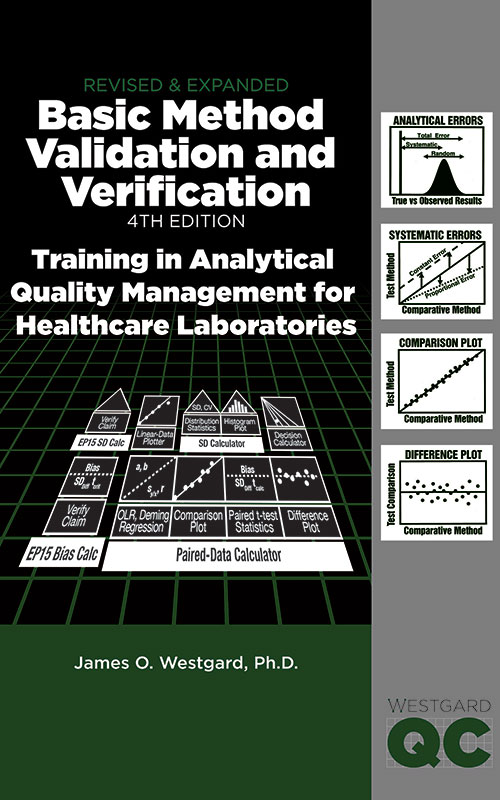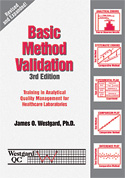Basic Method Validation
The Experimental Plan for Method Validation
Ok, so you've chosen the method. Now what do you do? Well, you've got to run the experiments and crunch the numbers. But guess what, not every experiment was created equal! Once again, you must choose carefully and plan out your experiments. (Preview)
| Note: This lesson is drawn from the first edition of the Basic Method Validation book. This reference manual is now in its fourth edition. The updated version of this material is also available in an online training program |
- Approach for formulating plan
- Types of errors to be assessed
- Experiments for estimating analytical errors
- Organizing the experiments into a plan
- A walking tour of the plan
- References
I start this discussion with the assumption that the method to be tested will be carefully selected, as discussed earlier in MV - Selecting a Method to Validate. Therefore, the application requirements will be satisfied and the methodology characteristics will be considered.
We can then focus on the performance characteristics, which include precision, accuracy, interference, working range, and sometimes detection limit. These characteristics may already have been estimated by the manufacturer to make claims for the method or by a user to publish an evaluation study. These claims or published results still need to be verified to show that the method works properly and is acceptable in an individual laboratory. That's the purpose of the method validation study.
Approach for formulating a plan
To carry out a good method validation study, you need to do the following:
- define a quality requirement for the test in the form of the amount of error that is allowable, preferably an allowable total error,
- select appropriate experiments to reveal the expected types of analytical errors,
- collect the necessary experimental data,
- perform statistical calculations on the data to estimate the size of analytical errors,
- compare the observed errors with the defined allowable error, and
- judge the acceptability of the observed method performance.
An experimental plan can be formulated by:
- recognizing the types of errors that need to be assessed for this test and method,
- identifying the appropriate experiments and the amount of data needed to estimate those types of errors, then
- organizing these experiments to perform the quick and easy ones first and the ones taking more time and effort last.
We invite you to read the rest of this article.
This article, plus many more important, updated, and expanded chapters are available in the Basic Method Validation manual, 3rd Edition which is available at our online store. You can download the Table of Contents and other chapters here. You can also enroll in the Basic Method Validation course and access the new materials online.


